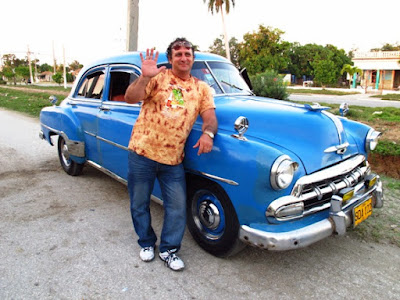 |
| View of the mountains from Casa Andina in Arequipa, Peru |
Casa Andina Private
Collection
Arequipa, in southern Peru, is the historic center of the Highlands
Region. Its Inca legacy is overshadowed by remnants of the Spanish colonial
period, and that includes the renovated house that became the foundation for
Casa Andina. This Spanish mansion, named
a National Historic Monument, has been expanded into a centrally located luxury
hotel that’s as much museum as accommodation.  |
| Courtyard of Casa Andina in Arequipa, Peru. |
 |
| Exterior of Casa Andina in Arequipa retains characteristics of a Spanish Colonial building. |
Dine: A full
buffet breakfast is served either indoors or outdoors by the main courtyard of
the hotel. For lunch or dinner, enjoy
the beautiful gardens of Sol Del Mar in Arequipa.
Colca Lodge |
| Dining room of Colca Lodge, favorite accomodation for people who wantto hike in Colca Canyon. |
Built completely of stone, mud bricks, and thatched roofs, ColcaLodge is an oasis in the middle of the sparsely populated Colca Valley. Its architecture was inspired by ancient Inca
buildings, perfectly appropriate since it’s located in farmland heavily
terraced by Inca and pre-Inca cultures--and still cultivated using ancient
methods.
Located next to the Colca River, the lodge features beautiful
views from the lovely spa and naturally soothing hot springs. Sunny orange
stucco buildings and plenty of colorful flowers brighten the scenery, and
numerous paths allow for gentle exploration around the property. |
| Natural hot springs invite guests to soak and relax. |
Dine: Colca Lodge’s fine restaurant offers a varied menu for breakfast, lunch, and dinner—including tasty soups and barbeque (alpaca, anyone?). Staff will pack a generous lunch to-go if requested.
Hotel Titilaka
Situated in a rural area overlooking Lake Titicaca (at 12,500 feet altitude it’s the world’s highest navigable
lake), art-filled Hotel Titilaka considers sharing historic and cultural experiences as
important as pampering guests.  |
| Back side of Hotel Titilaka with walkway to the lake (beware the altitude of 12,500 feet!) |
A few years ago Peruvian developer Ignacio Masias purchased an existing hotel on a private peninsula jutting into Lake Titicaca. After renovations, eighteen large, contemporary rooms now gleam with walls of windows that take advantage of spectacular scenery and connect guests with the natural environment.
The hotel’s signature program is The Andean Experience, which includes transportation to and from the Juliaca airport, numerous excellent tours led by local residents, and all meals and drinks. Excursions that revolve around local culture allow this stunning retreat to promote economic development of nearby communities.
 |
| Breakfast is a sumptuous affair with impeccable and personalized service. |
 |
| Superb views of Lake Titicaca from our room. |
Dine: You couldn’t
beat the on-premises restaurant for fresh seafood and vegetables—even if there
were other options nearby which there aren’t--and everything is included.
Photos by Larry and Beverly Burmeier






























